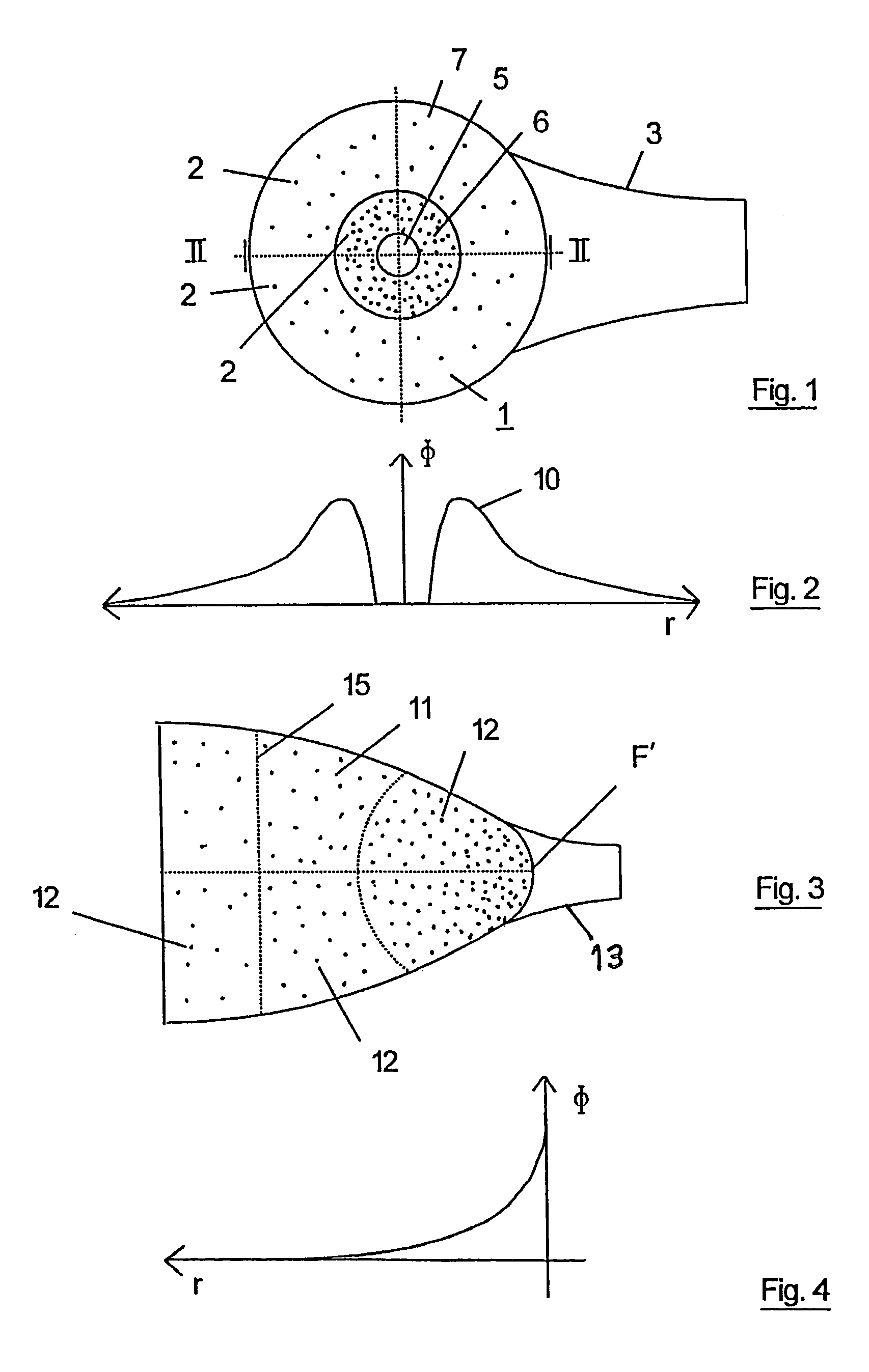Microcontact structure for implantation in a mammal, especially a human being
a microcontact and human body technology, applied in the field of microcontact structure provided for implantation in a mammal, can solve the problems of insufficient surface density of microcontacts, insufficient internal arrangement feeding these microcontacts, and insufficient concept, so as to achieve good resource utilization
- Summary
- Abstract
- Description
- Claims
- Application Information
AI Technical Summary
Benefits of technology
Problems solved by technology
Method used
Image
Examples
Embodiment Construction
[0025]FIG. 1 shows a plan view of a microcontact structure with a virtually rotationally symmetrical arrangement for epiretinal implantation in an eye.
[0026]The microcontact structure has a virtually circular carrier film 1 which is divided, for example, into a plurality of sectors and is made of polyamide. A large number (in FIG. 1 about 200) of microcontacts 2 is formed on this carrier film, the microcontacts 2 consisting in a manner known per se, for example of small precurved platinum structures standing substantially vertically on the carrier film. These microcontacts 2 are in turn connected via conductor tracks to a data line 3 leading outwards which conducts signals unidirectionally or bidirectionally to the microcontacts 2, or receives them. A wireless communication can also be provided instead of a data line.
[0027]The carrier film 1 has three concentric regions in total, a central region 5 which in the implanted state covers the fovea, a first region 6 which in the implante...
PUM
 Login to View More
Login to View More Abstract
Description
Claims
Application Information
 Login to View More
Login to View More - R&D
- Intellectual Property
- Life Sciences
- Materials
- Tech Scout
- Unparalleled Data Quality
- Higher Quality Content
- 60% Fewer Hallucinations
Browse by: Latest US Patents, China's latest patents, Technical Efficacy Thesaurus, Application Domain, Technology Topic, Popular Technical Reports.
© 2025 PatSnap. All rights reserved.Legal|Privacy policy|Modern Slavery Act Transparency Statement|Sitemap|About US| Contact US: help@patsnap.com


